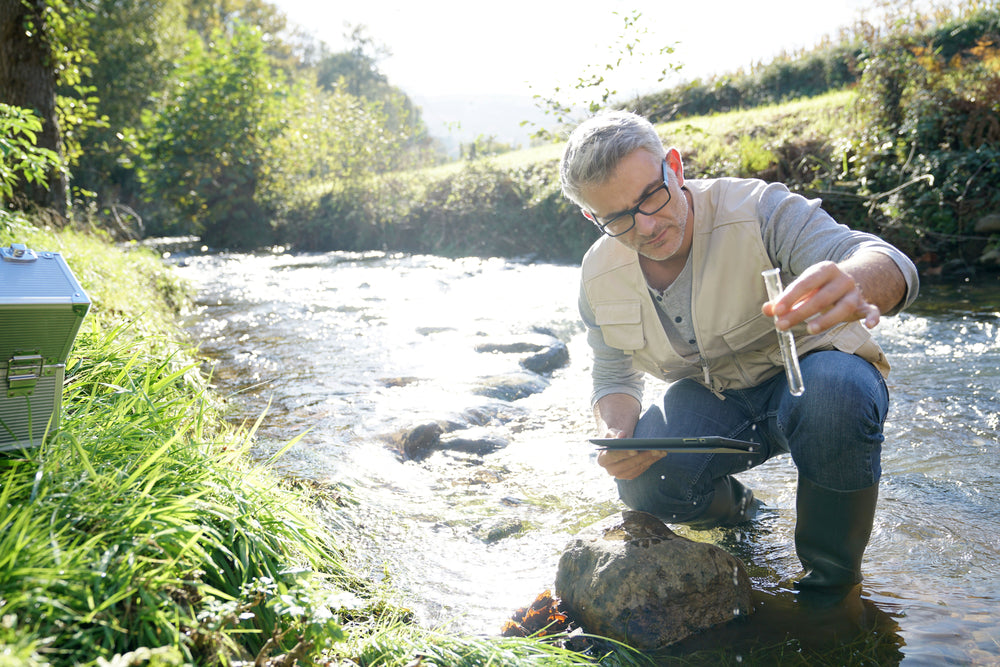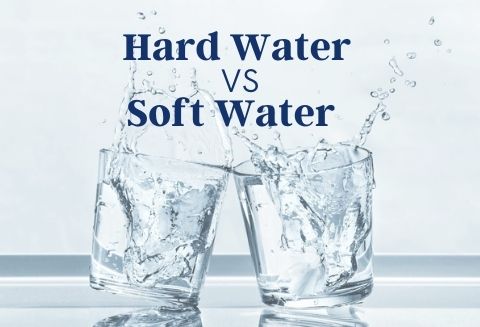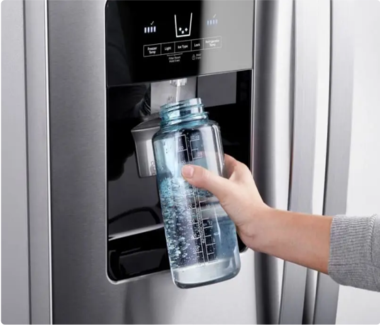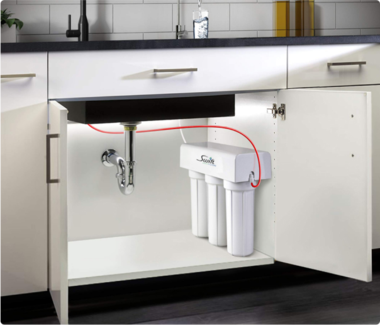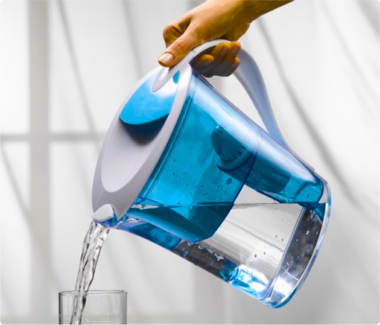What Are the Different Types of Polluted Water?
Posted by Swift Green Filters on

Different Types of Polluted Water
Water is a universal solvent. This is the major reason why it gets contaminated easily. Potentially harmful substances like lead, copper, arsenic, runoff from agricultural lands, plastics, and a whole lot of materials have been discovered to dissolve and increase the amount of pollutants in water. Here we are giving a description of all types of polluted water, which at present has reduced the quality of drinking water all over the world.
The type of contaminant that gets into a water body determines the extent to which it will be render non-useful. As the list keeps growing, it is important to stay updated so you can be guided accordingly.
Categories of Water Pollution
There are various levels of water contamination depending on the source of water and type of pollutant. This brings us to:
Chemical Pollution
Here, chemical elements which could either be organic or man-made when in contact with water bodies can reduce the quality of water. These substances include salts, metals, bleach, pesticides, nitrogen, toxins produced by bacteria, drugs used by man or animal, etc. Chemical pollution stalls the activities of many animals living in water. It even causes their death. The runoff of pesticides applied in the control of weeds, fungi, and insects on the farm into water can poison fishes. Eating an infected fish is dangerous to human health as it can lead to poisoning from chemical water pollution. Oil spills from wrecked ships releases petroleum, another water pollutant. This product can spread over miles on water cutting short the lives of many fishes. When oil sticks to the feathers of the sea birds they may not be able to fly. The waste streams from chemical industry are the primary reason for chemical pollution in the ocean. Many chemical plants and other industrial companies take their waste to these water bodies and dump them there. This infects the surrounding rivers and other surface water forms. While it may be true that disposing of chemical waste is now regulated - they’re treated before disposal, the effect of this pollution is still felt.

Groundwater Pollution
A lot of homes depend on groundwater pumped to the earth surface and stored in overhead tanks for house use. This water form may even be the sole source of freshwater for some persons living in rural areas. Groundwater pollution occurs as a result of runoff of contaminants from landfill, septic systems, pesticides, and fertilizers get into the aquifer and make the water unsafe and unhealthy for consumption. Contaminated lakes, streams, and oceans are groundwater pollution examples following the seepage of the infected water from the source to these water bodies. When an aquifer gets polluted with toxins it may not be usable for a very long time - even decades! Other sources of groundwater pollution include seepage of acidic rain and farm waste into the ground.

Radiological Pollution
This type of polluted water occurs when toxic radioactive substances get into a water supply – it destroys the purity and quality of the water. These substances are also referred to as radionuclides. Radiological can occur naturally and can be found everywhere - the rays of the sun, food, human DNA, and on the earth crust. Examples of free occurring ones found in drinking water are isotopes of radon, uranium, and radium. Other sources of radiological pollution triggered by human activities include waste generated during: mining and combustion of coal; production of oil and gas; mining and smelting of metals; recycling, fertilizer production. Waste from medical facilities and nuclear power plants also give off radiological. These substances can move through the porous soils, or stick to dust particles in the air, move to other areas before getting into streams, lakes, and other sources of surface water that people use.
Microbiological Pollution
Microorganisms like protozoa, viruses, and bacteria living in water bodies can become pollutants in water. This is a natural form of water contamination. Fishes, animals and humans that drink this type of water can get ill. Severe diseases such as cholera are as a result of microbiological pollution. The health of poorer communities is at risk of this water pollution type as there isn’t any facility to treat the water. In general, contamination can also happen when the pathogens from a microbial water pollution gets into contact with a system, medication, or device. For instance, if a tool used in surgery is infected with pathogens, it can cause a surgical wound infection.
Nutrient Pollution
This type of polluted water is seen when water contains excessive nutrients, basically nitrogen and phosphorus which can work as fertilizer leading to too much growth of algae. Another name for this process is eutrophication. Nutrient pollution can cause reduced levels of oxygen in water. Due to excessive growth of algae, photosynthesis is inhibited because light can no longer reach the plant. Following the death of the plant and algae, decay sets in. While this decay is happening, the process uses up the available oxygen in the water. As a result, the dissolved oxygen in the water becomes very low. This can no longer support the life of aquatic animals; they die. Should such water be used by humans, it would be very harmful. The above scenario is one among many nutrient pollution examples. There are several sources of nutrients. They can naturally exist from rock and soil weathering in the watershed. Mixing of ocean water current is also a source of nutrients. People living in coastal areas can also generate nutrient. This gives rise to more human-related nutrient pollution sources like byproduct from wastewater treatment, runoffs from farms and lands in urban centers during rains.
Oxygen-depletion Pollution
Water contains oxygen. The microorganisms in water bodies eat up biodegradable materials present in water. An increase in the amount of biodegradable substances in water will cause more microorganisms to thrive and consume the oxygen present. This will drastically lower the level of oxygen in the water. The entire process is known as oxygen depletion pollution. Another important point worthy of mention is that low-level oxygen causes the death of oxic-microbes while giving life to anoxic-microbes. Dangerous toxins like sulfides and ammonia are produced by anoxic-microorganisms which aren’t favorable to animals, humans, and the surrounding. The natural balance of water is disturbed when there is oxygen depleting water pollution.

Surface water pollution
Like we said earlier, surface water is found above the earth surface and includes lakes, rivers, and oceans. Most surface water is of freshwater forms. When this water becomes unfit for human consumption, it is described as surface water pollution. Nutrient pollution is the primary reason why there is contamination in freshwater sources. Runoffs from farm waste and fertilizers waste from industries and cities, and the junk trashed directly into water channels by individuals all contribute to surface water contamination.
Water pollution is posing a great threat to the life. From the different studies, it has been revealed that every year millions of people are dying due to polluted water. Contaminated water also makes you sick. Every year, about 1 billion people fall ill from polluted water. These all types of polluted water are affecting life in some way or the other.
Swift Green Filters main objective is to make healthy and clean water available to everyone for the betterment of the healthy life. We recommend people to switch to Swift Green Filters so that we all win the battle with polluted water.
Shop By Category
Swift Green Filters offers wide variety of filtration product

This product is a compatible Replacement Water Filter.
This filter is not sourced by or sponsored by the above mentioned brands. Swift does not represent any of the above brands.
All Mentioned Brands names and part numbers have been used for reference purposes only. Swift Green Filters is an independent brand.
Swift is not responsible for damage caused by installation or equipment errors. Max liability is two times of the cost of product

We Have
Awesome Discounts
Subscribe to our newsletter to get discounts.








